Brant: In the Underworld II
Annotations
Aeneas and the Sibyl, in the top right corner, approach the shores of the Cocytus river. The shades of the recently dead pour out from the jaws of a reptilian monster that signifies the entrance to the underworld. The right side of the monster is engulfed in flames. At the top center above and behind the head are two minute figures whose purpose is unclear, but the message seems sinister; a human figure in white is assaulted by a shadowy figure with a tail. Below the monster, a spring pouring out of a rocky cave is the source of the Acheron, Cocytus and Styx rivers (295-7); the latter two are split by a large delta. At the shores of the Cocytus, the river on the right, the shades wait to pass into the deeper realms of the underworld (305-16). In the lower left, Charon, with his garment knotted at his waist instead of his shoulder, ferries a handful of shades across the Styx (298-301). Palinurus, Aeneas' helmsman who fell to his death from the stern of the ship, approaches Aeneas and begs him to return to the shore where his body has washed up and give him a proper burial (337-83). The Sibyl promises him a proper tomb, but not by the men of Aeneas (377-81).
Woodcut illustration from the “Strasbourg Vergil,” edited by Sebastian Brant: Publii Virgilii Maronis Opera cum quinque vulgatis commentariis expolitissimisque figuris atque imaginibus nuper per Sebastianum Brant superadditis (Strasbourg: Johannis Grieninger, 1502), fol. 265v, executed by an anonymous engraver under the direction of Brant.

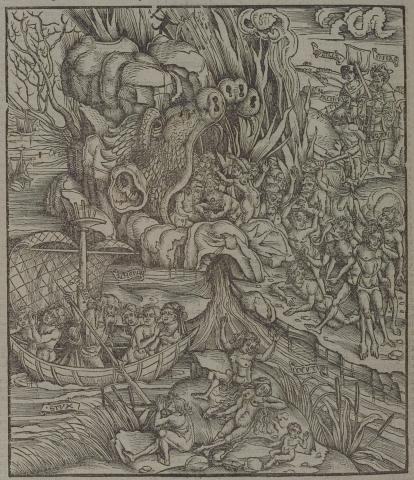

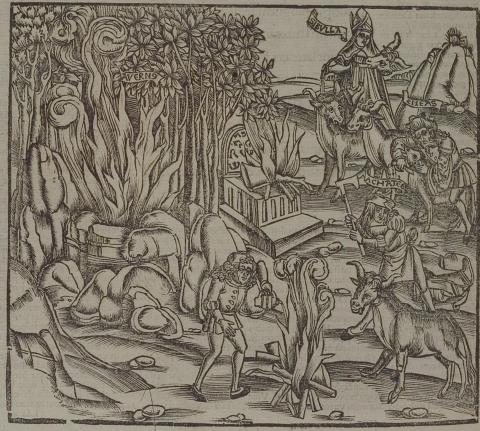
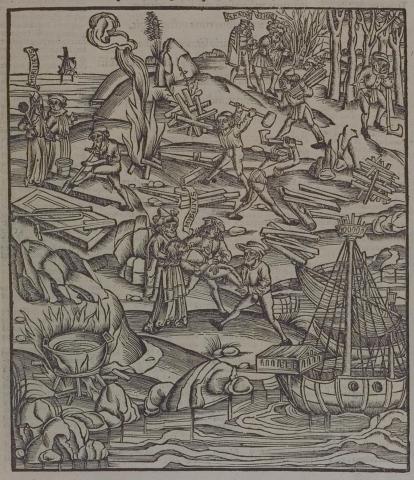


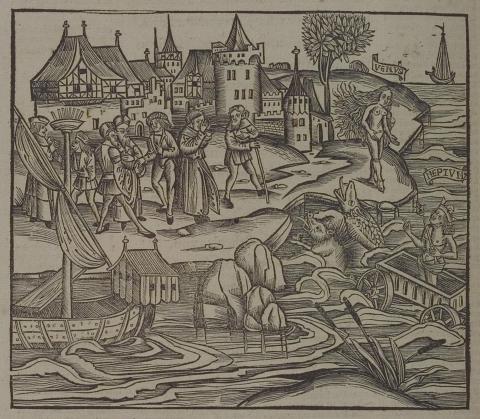
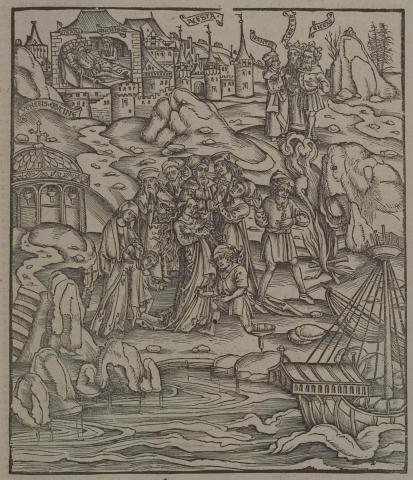
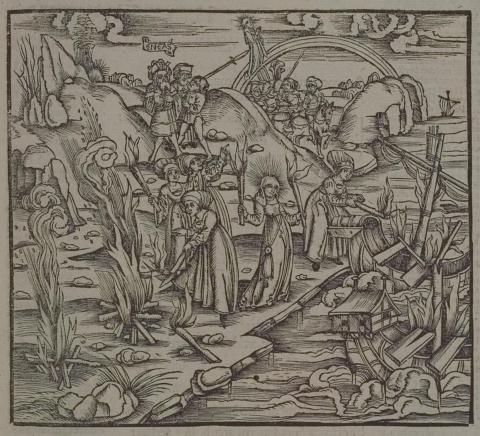

Sebastian Brant (1458-1521) was a humanist scholar of many competencies. Trained in classics and law at the University of Basel, Brant later lectured in jurisprudence there and practiced law in his native city of Strasbourg. While his satirical poem Das Narrenschiff won him considerable standing as a writer, his role in the transmission of Virgil to the Renaissance was at least as important. In 1502 he and Strasbourg printer Johannes Grüninger produced a major edition of Virgil’s works, along with Donatus’ Life and the commentaries of Servius, Landino, and Calderini, with more than two hundred woodcut illustrations. (Annabel Patterson)